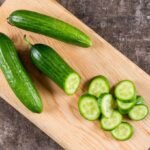Now Reading: Bird Flu Outbreak in the U.S.: Latest Updates & What You Need to Know
- 01
Bird Flu Outbreak in the U.S.: Latest Updates & What You Need to Know

Bird Flu Outbreak in the U.S.: Latest Updates & What You Need to Know
The U.S. is facing a severe bird flu outbreak, affecting poultry, cattle, and humans. Learn the latest updates, risks, and expert insights on H5N1.
Table of Contents
The recent bird flu outbreak in the U.S. has many of us sitting up and taking notice. With headlines about spreading infections, rising egg prices, and concerns over potential human cases, the situation is generating both worry and curiosity. Whether you’re a concerned citizen, a farmer, or simply someone who cares about public health, understanding the unfolding story behind this H5N1 avian influenza outbreak is essential. Let’s explore the latest updates and what they mean for you and your community.
What is H5N1 Bird Flu?
Bird flu, also known as avian influenza, is caused by viruses that primarily affect birds. The H5N1 strain, in particular, is notorious for its high contagion and potential impact on animal and human health. Initially confined to poultry, the virus has recently made an unexpected leap—affecting dairy cattle and, in rare instances, humans. Over the past year, health officials have been tracking this unsettling development closely as it disrupts traditional agriculture practices and poses challenges for public health safety.
Detailed Analysis of the U.S. Outbreak
Current Situation and Key Statistics
Recent data shows the outbreak has expanded its reach dramatically:
- 1,021 dairy herds across 17 states have been confirmed infected.
- An alarming number of poultry farms have been impacted, causing significant disruptions in supply.
- 70 confirmed human cases have been recorded, with a few cases exhibiting severe respiratory symptoms.
- Market impacts are evident, with egg prices surging as a consequence of large-scale culling.
These statistics reveal a pattern of rapid transmission among animals, leading to increased vigilance among health authorities and dairy industry experts.
Expert Perspectives and Public Health Insights
The Centers for Disease Control and Prevention (CDC) along with other health agencies emphasize that while the current risk to the general public remains low, the situation is fluid. Experts are particularly focused on:
- Animal-to-human transmission routes: Although most human cases have been linked to direct exposures on farms, ongoing research is evaluating the potential for broader spread.
- Mutation concerns: Continuous monitoring is in place to detect any viral mutations that might pave the way for human-to-human transmission.
- Economic and food supply impacts: The outbreak affects more than just health—it disrupts food markets, increasing prices and creating supply chain challenges.
These insights underscore the importance of both public health measures and industry-specific responses to mitigate risks.
Emerging Trends
One of the most striking trends is the virus’s unusual jump from poultry to dairy cattle—a development that complicates traditional biosecurity measures on farms. This crossover has forced agricultural experts to adapt quickly, investing in new safety protocols and ramping up surveillance. Additionally, the digital age has seen real-time updates and community-driven discussions, helping to spread awareness and encourage proactive behavior among those directly affected.
How to Stay Safe and Prepared
For the General Public
- Stay Informed: Follow updates from trusted sources such as the CDC and local health departments.
- Practice Safe Food Handling: Always cook poultry and eggs thoroughly. Good hygiene in the kitchen goes a long way in reducing risks.
- Minimize Exposure: Avoid contact with sick or dead birds, especially if you live in or near affected areas.
For Farmers and Agricultural Workers
- Implement Biosecurity Measures: Use protective gear when handling animals, and disinfect equipment and facilities regularly.
- Monitor Animal Health: Keep a close watch on your livestock and report any unusual symptoms or deaths immediately to local authorities.
- Collaborate with Experts: Stay in touch with agricultural extension services and veterinary experts who can offer guidance tailored to your operations.
Key Takeaways
- Wider Impact: The H5N1 bird flu outbreak in the U.S. is affecting poultry, dairy cattle, and, in limited cases, humans.
- Rapid Spread: With over 1,000 dairy herds infected and significant disruptions in the poultry industry, the economic and food supply repercussions are palpable.
- Cautious Optimism: Although the CDC assures that the current risk to the public is low, the potential for change remains, making vigilance crucial.
- Actionable Safety Measures: Both the general public and those in the agricultural sector have practical steps to protect themselves and curb the outbreak.
Conclusion
The bird flu outbreak in the U.S. is a developing story that underscores the interconnectedness of our health, food supply, and economy. While current data and expert opinions assure us that the immediate risk to the public is low, the situation demands ongoing attention and adaptability. By staying informed and adhering to proven safety measures, communities across the nation can navigate these challenging times with resilience and care.
Disclaimer: This content is for informational purposes only and should not be considered professional or medical advice. Please consult healthcare professionals and official sources for guidance tailored to your specific situation.











